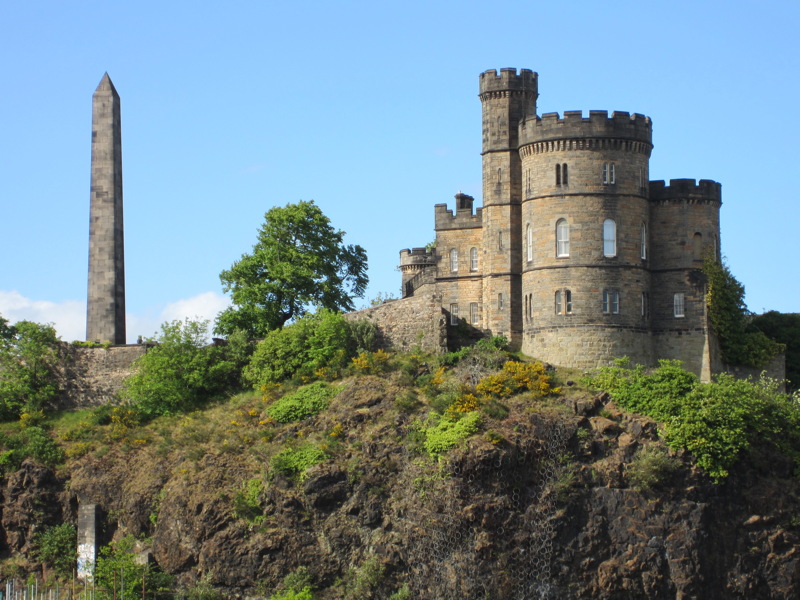Governor's House
Edinburgh Buildings Thumbnails Buildings Home
|
Governor's House and Political Martyrs Monument Occupying a prominent location on the edge of Calton Hill, in central Edinburgh, the Governor's House is a castellated structure situated next to Old Calton Burial Ground and behind St. Andrew's House. This is a remnant of the jail which once occupied the site of the latter, at the time the largest prison in Scotland. The Governor's House was built 1815-17 by Archibald Elliot (1761 — 1823), who extended the Bridewell Gaol, which was the work of Robert Adam (1728-92) in 1791. The buildings were all built to match James Craig's Old Observatory on Calton Hill behind. The Governor's House lay unused for many years and is now occupied as part of the St Andrew's House office complex. The Political Martyrs Monument is a Category A listed memorial to the Scottish Martyrs to Liberty and stands in the Old Calton Cemetery on Calton Hill, Edinburgh. It is a tall ashlar obelisk on a square-plan base plinth. The Scottish Martyrs were five men, three of them English, who were imprisoned for campaigning for parliamentary reform in the late 18th and early 19th centuries. The five were accused of sedition and transported to Australia in 1794, being allowed to return some 15 years later. The monument is in the form of a 90 ft obelisk of grey-black sandstone blocks, and is inscribed with the names of the five men: Thomas Muir, Thomas Fyshe Palmer, William Skirving, Maurice Margarot and Joseph Gerrald It states it was erected by the Friends of the People society in 1844. It was in 1837 that Joseph Hume MP initiated a plan for a memorial to the Scottish Political Martyrs. On 21 August, 1884, 3000 gathered to see Humne lay the foundation stone. The monument stands in the Old Calton Burial Ground on Calton Hill, a focal point for Scottish national pride. Photo 901, May 2011 |

|